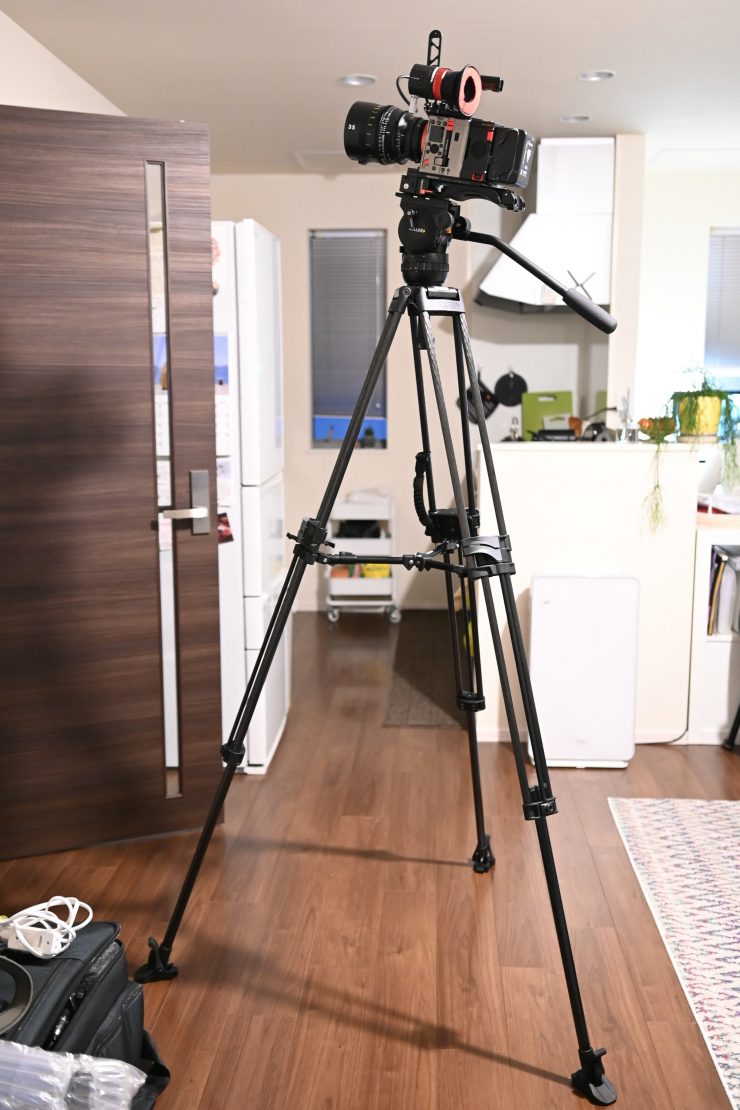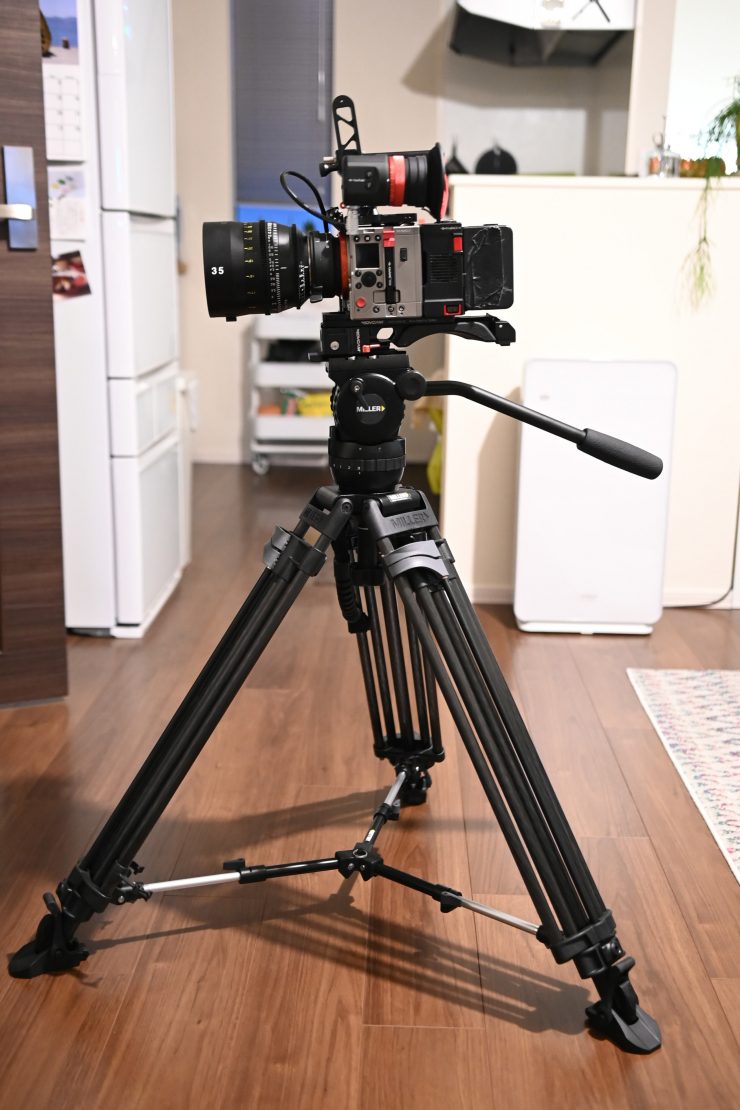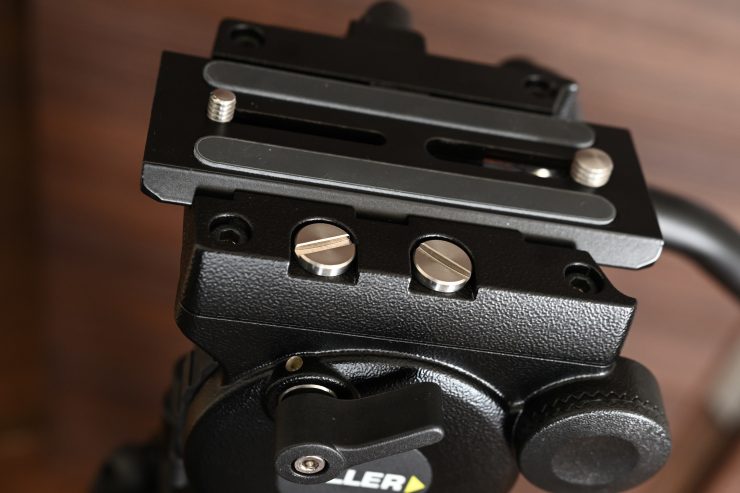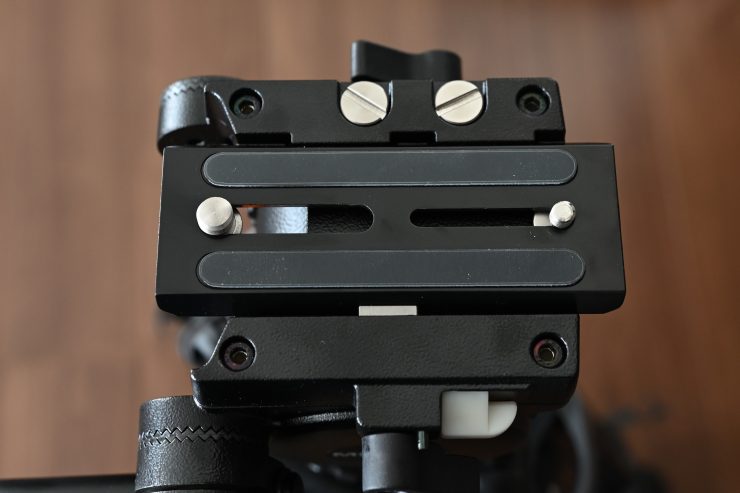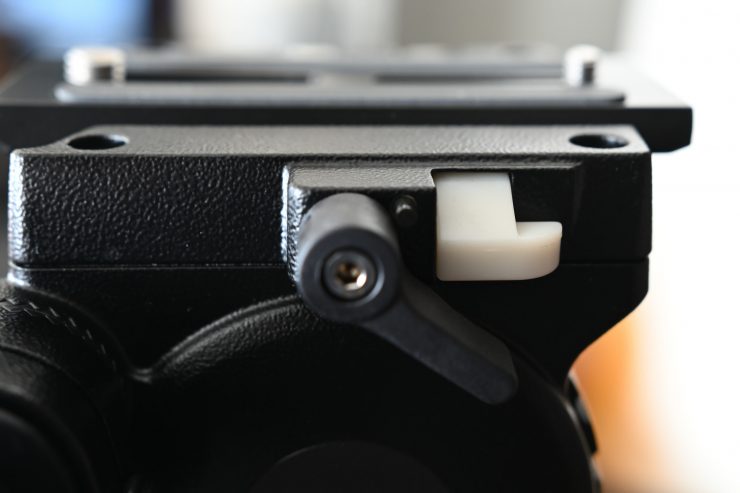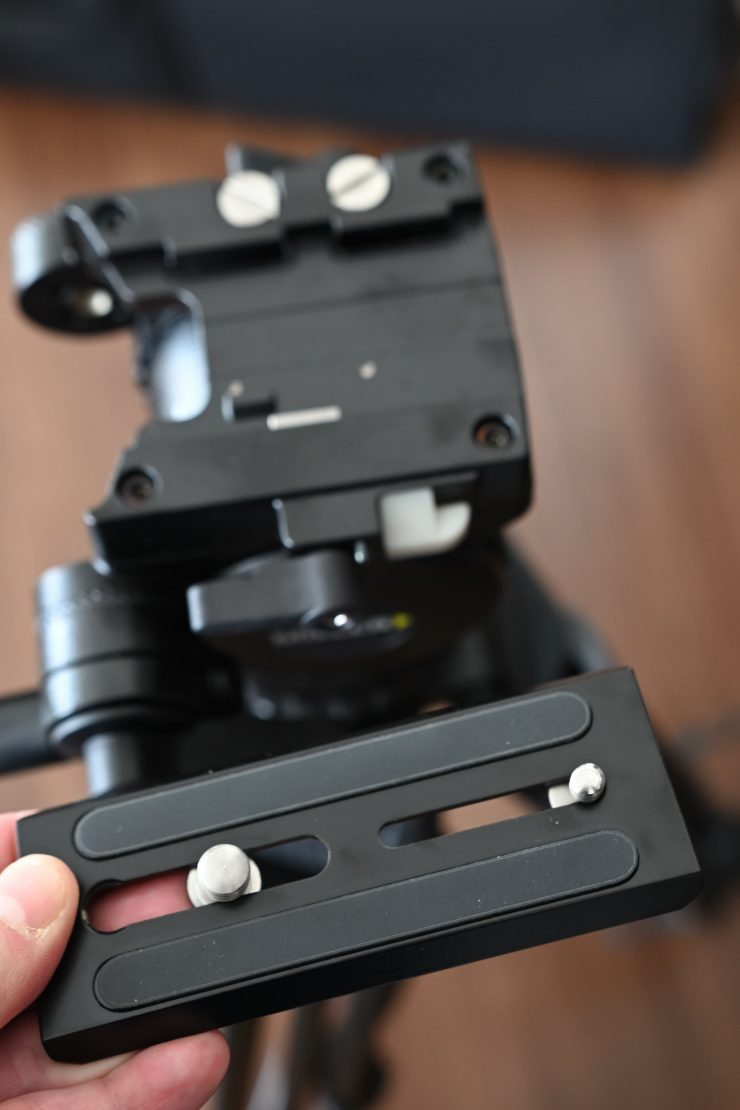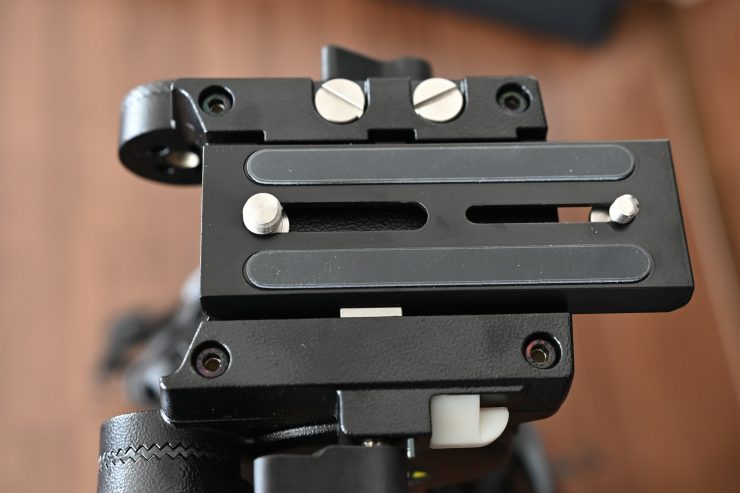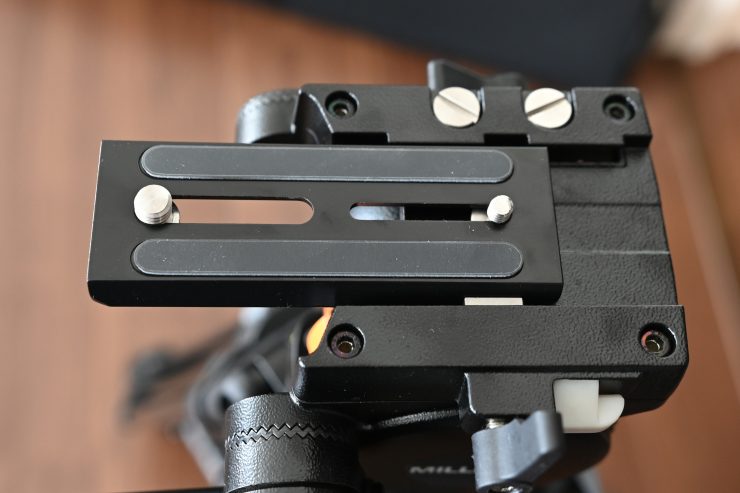
The Miller CX6 Fluid Head is part of the Compass X range. It is a 75mm ball leveling fluid head designed to take payloads from 0-12kg.
Who is the CX6 aimed at?
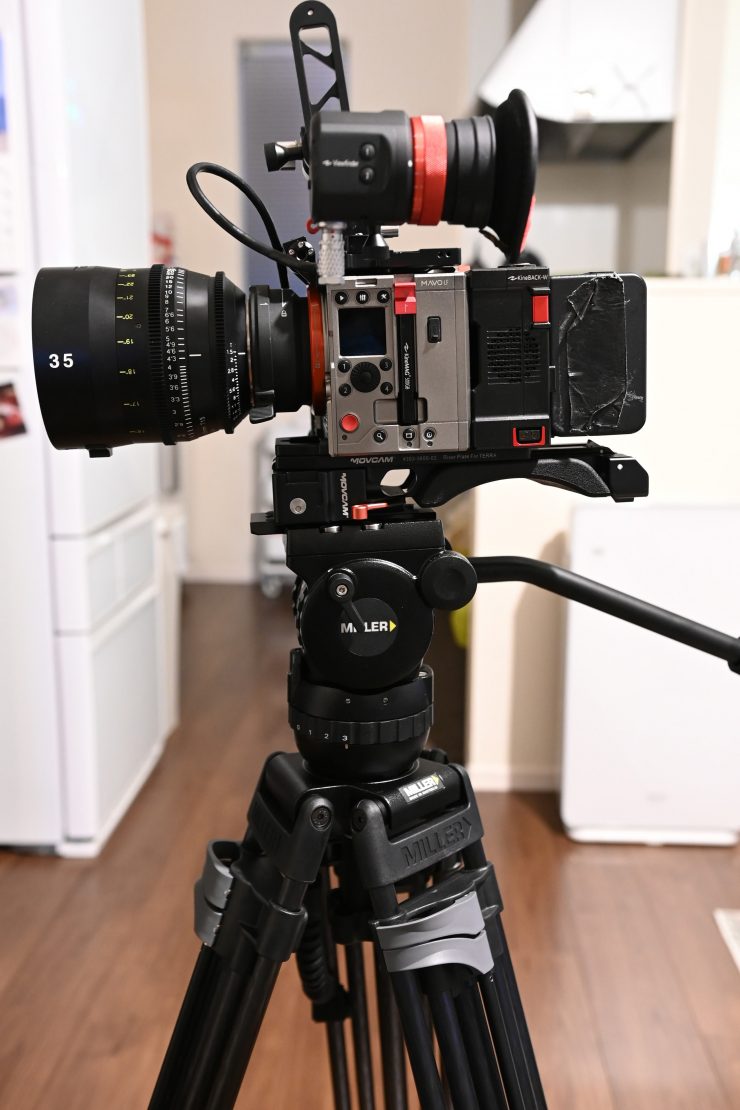
The CX6 fluid head has been designed for anybody doing ENG, soft news, documentary or filmmaking with smaller sized mirrorless and DSLR cameras or mid-sized digital cinema cameras.
In my personal view, the CX6 is aimed at the same user who would be looking at a Sachtler FSB 6, Cartoni Focus HD Video Tripod Head, Sachtler FSB 8, and even 100mm bowl heads such as the Manfrotto 509HD Professional Video Head.
Key features
- Powerful, light and multifunctional.
- Perfect for payloads to 0-12kg (26.4bs).
- 15+0 CB Plus selectable counterbalance positions.
- Ergonomically located CB Plus switch.
- 3+0 selectable positions of fluid pan and tilt drag.
- Positive selection radial ring controls.
- Illuminated bubble level.
- Precise floating pan-tilt calliper locks ensure bounce free on-off performance.
- Side loading, 60mm balance travel camera plate with 1/4” and 3/8” screws.
- Robust construction for rugged outdoor shooting conditions.
- Side mounting point for viewfinders and accessories.
- Optional second pan handle mount.
- 3-year warranty.
First Impressions

Nothing initially jumps out about the CX6, but that’s not a bad thing. A good tripod head should be functional, understated, and just get on with the job.
The tripod looks to be solidly made and well-featured. So, let’s jump in and have a closer look.
Payload capacity
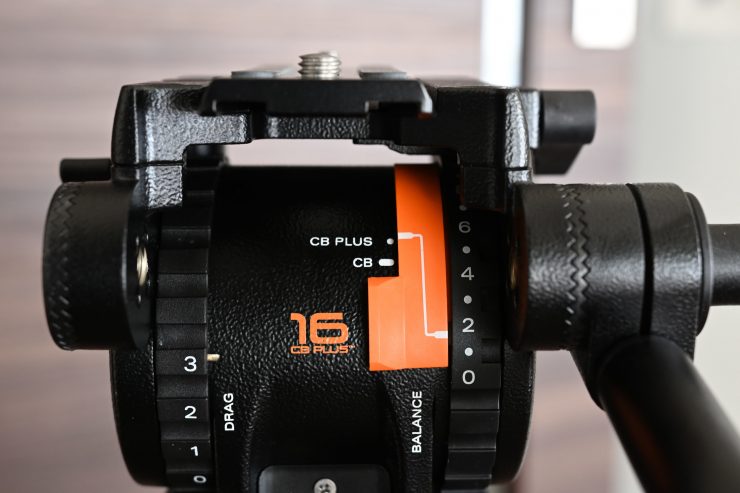
The CX6 has a payload capacity of 0kg (4.4lbs) to 12kg (26.5lbs). This is a good range if you are using anything from a mirrorless/DSLR up to mid-sized digital cinema cameras like a Canon C200, Panasonic EVA1, etc.
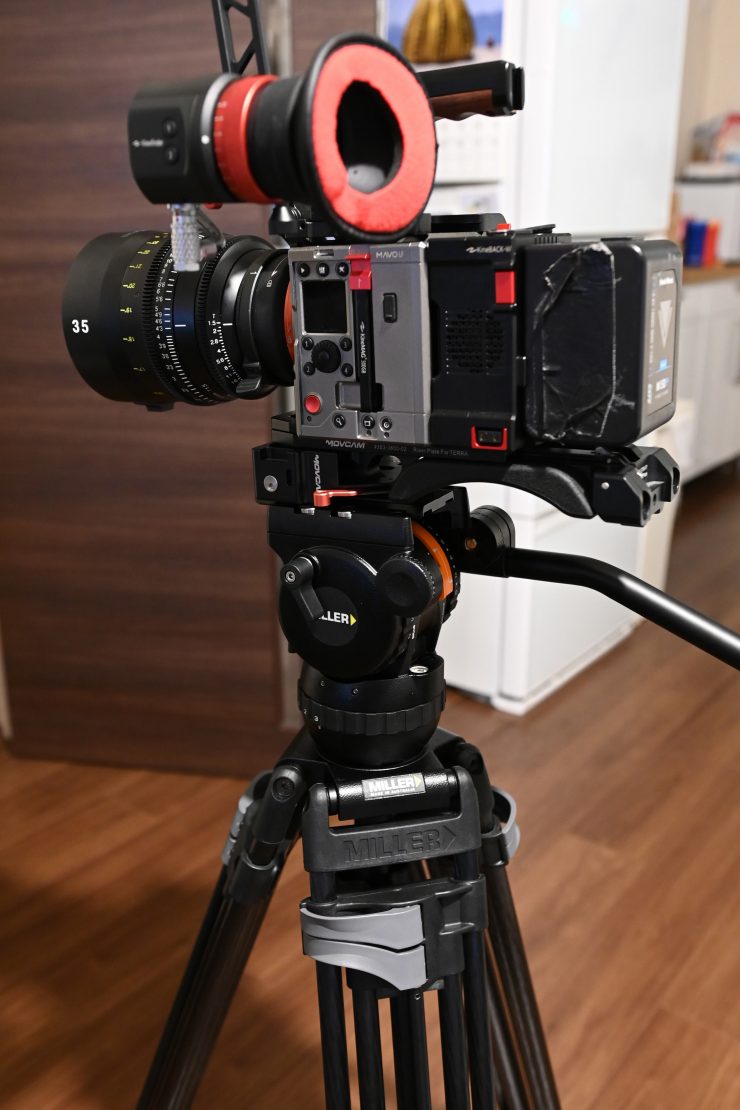
In theory, you could also use it with something like a Panasonic Varicam LT or Blackmagic URSA Mini Pro as long as you weren’t running a lot of additional accessories and large lenses. I used the head with the Kinefinity MAVO LF and a Tokina Cine Vista 35mm T1.5 lens and it performed well.
How does this payload capacity compare to other similar fluid heads that are on the market?
- Miller CX6 0kg up to 12 kg (26.5 lb)
- Sachtler FSB 6 1.5 kg (3.3 lb) to 8 kg (17.6lb)
- Cartoni Focus HD Video Tripod Head 0 kg to 12 kg (26 lb)
- Manfrotto 509HD Professional Video Head 0 kg to 13 kg (28.66 lb)
- Sachtler FSB 8 0 kg to 9 kg (20 lb)
Weight
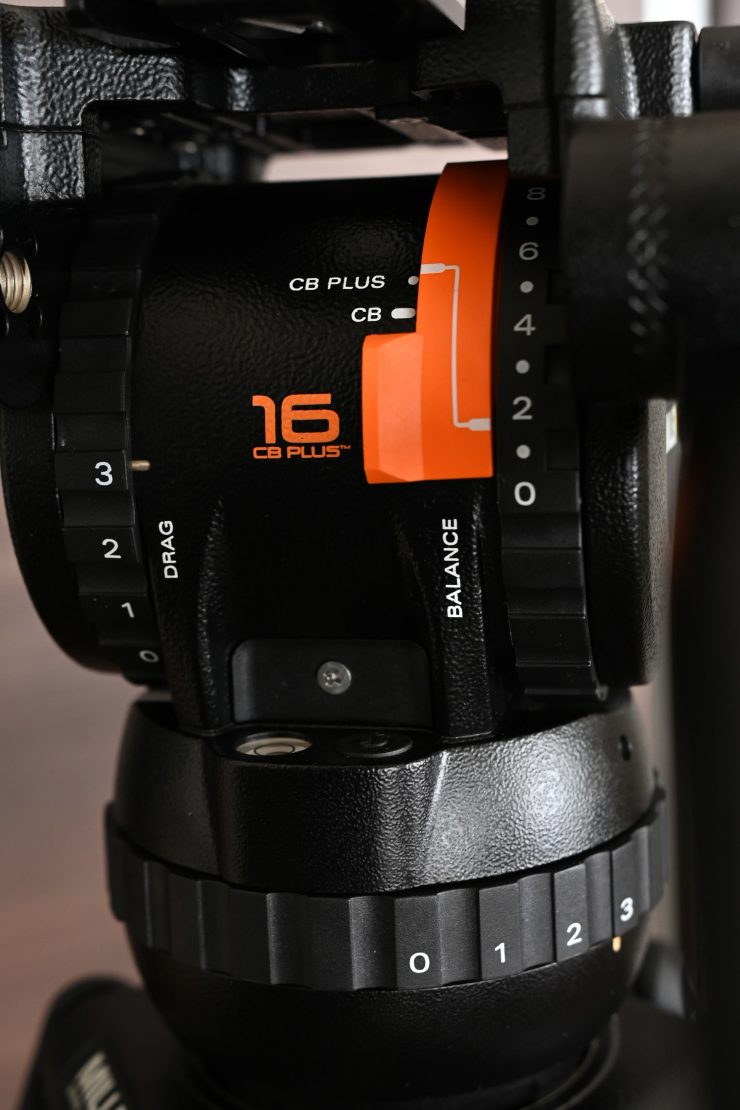
No one likes carrying anything heavy and from my experience, choosing a tripod requires a bit of give and take. If you go with something that is too light it may be easy to carry around, but it won’t provide stable results when using long lenses, and it will probably struggle if you are trying to do smooth pan and tilts. This is true, even if you are using lightweight cameras.
If you choose something that is too big and heavy, you will have a super steady platform in any type of conditions and you will be able to do very smooth and precise pan and tilts. The flipside is that it is going to be heavy to carry around and if your camera is too light there won’t be enough inertia to create nice movement when you pan and tilt.
You really need to strike a good balance between the weight of the tripod and usability, and that is not always easy to do.
The CX6 fluid head weighs 2.3kg (5.1lbs). How does this compare to other fluid heads with a similar payload capacity?
- Miller CX6 2.3 kg (5.1 lb)
- Sachtler FSB 6 2.6 kg (5.7 lb)
- Cartoni Focus HD Video Tripod Head 2 kg (4.4 lb)
- Manfrotto 509HD Professional Video Head 3.9 kg (
- Sachtler FSB 8 2.1 kg (4.7 lb)
Of course, you can’t just use a fluid head by itself, you will have to couple it to a set of sticks for most applications. Depending on what sticks you choose will also greatly impact the overall weight of your tripod.
In reality, the CX6 is not going to be a head that is chosen by someone running a large digital cinema camera and lens package. It is much more suitable for users alternating between smaller mirrorless cameras and small to mid-sized digital cinema cameras.
What tripods will it work on?
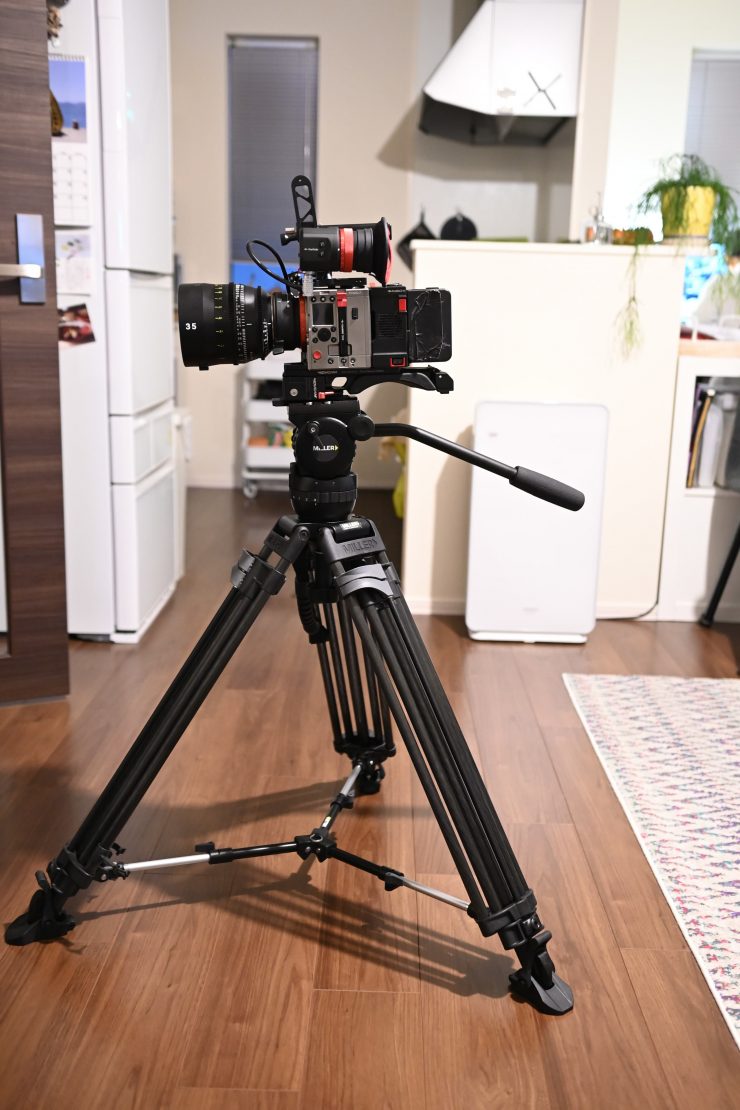
The CX6 fluid head will work with Miller 75mm bowl head tripods including the 100mm bowl Solo, 100mm Sprinter, and the HD and HDC series.
They will also work with most 75mm bowl head tripods as well.
I personally found that the CX6 made for a good companion to the Sachtler Flowtech 75 tripod legs. This is the nice thing about tripods, you can mix and match heads and legs.
How do you choose the right tripod?
I mentioned this on my Miller CiNX5 review, but the same applies to the CX6. There really is no such thing as the perfect tripod. Everyone’s needs are different, and there are a lot of factors that will decide what tripod works well for you.
What you need to do when selecting a tripod is factor in what type of work you do, what camera and lens packages you use, and what equipment you may use in the future. A tripod is a long term investment that is going to last you many decades if you look after it. It will outlive any camera you currently own. A tripod that might suit your needs today, may not suit your needs in the future.
If you are a working professional, your tripod is going to be one of the fundamental pieces of your kit. I can never understand why people buy a camera and then put that camera on a bad, cheap tripod.
I personally don’t like super lightweight tripods and flimsy small heads. While they may be easy to carry around, the heads on these tripods are usually pretty bad and you can’t do nice fluid controlled pan and tilts. Every time I use a tripod like this, especially with smaller mirrorless cameras, I end up getting frustrated with the smoothness of the pan and tilts.
In a lot of ways, using a terrible lightweight tripod almost defeats the purpose of buying a tripod in the first place.
Look, I get it, sometimes you do need a lightweight tripod. If you are just doing locked off shots, or need a tripod for a second camera for an interview, then a lightweight tripod makes sense. It also makes a lot of sense if you are traveling or have to carry a tripod long distances by yourself.
In saying that, a tripod is a long term investment and if you look after it, it can last you decades.
Build Quality & Design
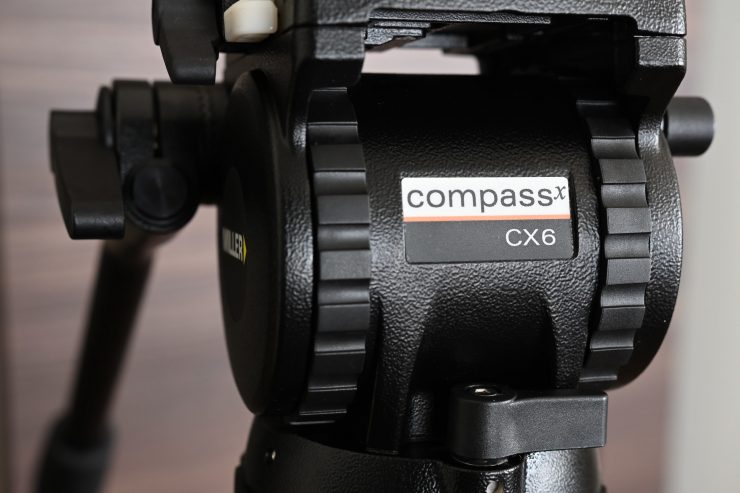
The fluid head is constructed of lightweight high-strength die-cast alloy and tough composite polymers, featuring precision ball bearings.
The CX6 has been built for extreme conditions and designed to work in a wide range of temperatures and environments.
I didn’t have any major concerns over the build quality of the CX6. The only thing that possibly gave me cause for concern was how long the quick release latch would last over a long period of time. It is made out of a hard plastic material. In saying that, most other tripod manufacturers use similar material for their release latches.
The CX6 head is solidly made and I like a lot of the design features. I don’t think there is anything that jumps out about the CX6, but that is probably a good thing. A good fluid head should go about its business with a minimum of fuss.
I like the layout of the counterbalance and pan and tilt control dials. They are easy to access and operate.
Sequential Counterbalance
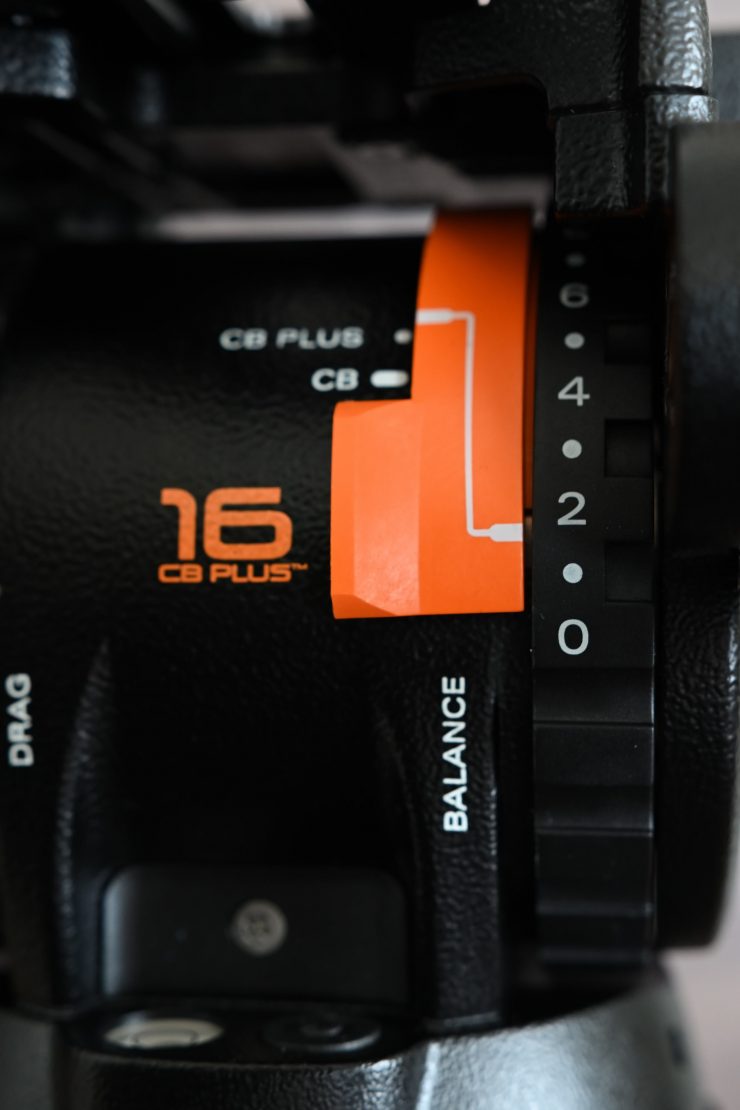
The CX6 features an advanced fluid drag, radial control rings, and quick release side loading platform.
The CX6 employs CB Plus technology providing 16 positions of counterbalance and, with 3+0 levels of Miller’s fluid drag
There is a dial on the back of the CX6 that allows you to change between the two different payload settings.
Sideload Platform
A lot of Miller tripods feature a sideload platform. While they aren’t all the same, the concept is. The CX6 head feature a quick release sideload platform. This is a nice feature to have and it allows you quickly put on or take off a camera package.
There is 60mm of camera plate travel, so users can quickly tune the position of their camera to get the best balance.
It is fairly easy to use. You just undo the locking knob and then press down on the release lever and you can take your camera straight off.
To put it back on you just press down on the release latch, place the camera plate down and then when it is is the right position you lock the knob.
Usability
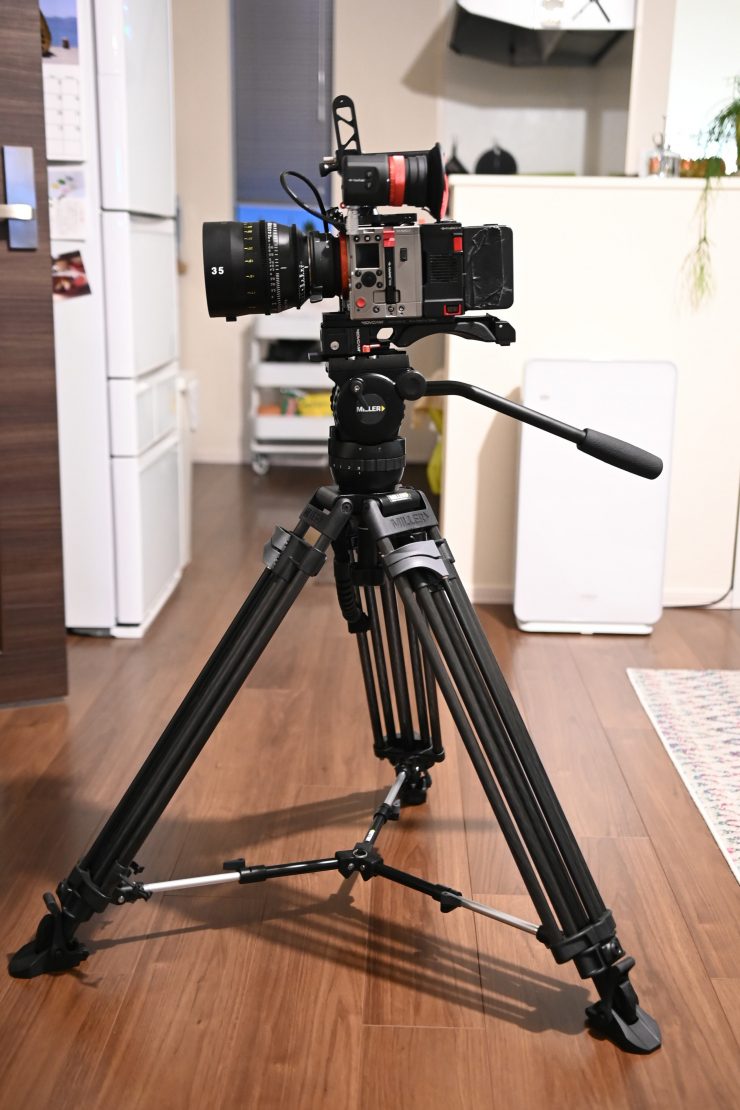
Something may look great on paper and have good specifications, but at the end of the day, it needs to perform well. If you are going to be spending good money on a tripod head that you plan on keeping for years and years, then you want to know that your money is being well spent.
The CX6 goes about its business and does its job with no problems, and that is pretty much all you can ask from a tripod. It shouldn’t get in the way or cause your problems.
The fluid head is nice and smooth and it offers a good selection of tension and counterbalance settings. I personally like a lot of tension on my tripod head when I do pan and tilts. I found that the CX6 offered a good amount of tension, which is something I have personally found lacking in a lot of other 75mm bowl heads.
The quick-release plate and adjustability are nice features and the counterbalance controls are well laid out and easy to see and access.
What impressed me with the CX6 was that it seemed equally at home running light mirrorless cameras or small/mid-sized digital cinema cameras. It’s nice to have a tripod head that can run a variety of cameras.
Price
The Miller CX6 retails for $1,355.94 USD which is very similar to what Sachtler charges for the FSB 6.
- Miller CX6 $1,355.94 USD
- Sachtler FSB 6 Fluid Head with Sideload Mechanism $1,311 USD
- Cartoni Focus HD Video Tripod Head $949 USD
- Manfrotto 509HD Professional Video Head $944.88 USD
- Sachtler FSB 8 $1,695.75 USD
While it is more expensive than offerings from Cartoni and Manfrotto, I think it’s real competition is the Sachtler FSB 6.
Conclusion
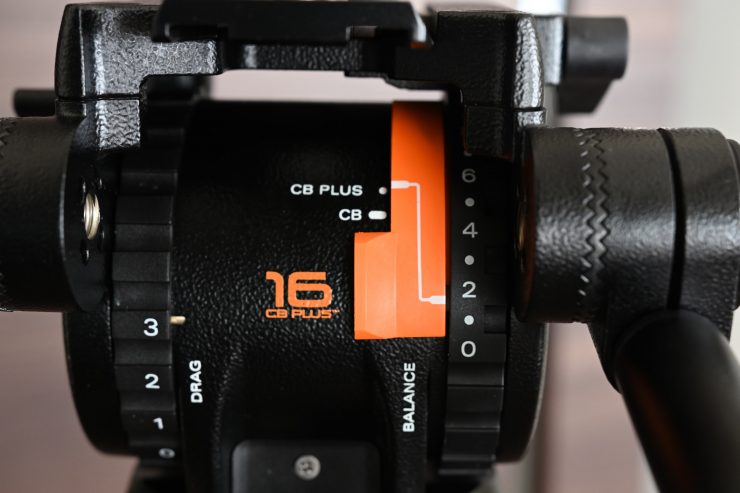
I liked my time with the CX6. As I previously mentioned it is a no-fuss tripod that just works. It is well designed and solidly built and most importantly it allows you do smooth pan a tilts with a variety of cameras.
If you are looking for a mid-sized high-performance fluid head that will work well with mirrorless camera packages and small to mid sized digital cinema cameras the CX6 is certainly worth looking at. It makes for a compelling option if you are looking at a Sachtler FSB 6.

